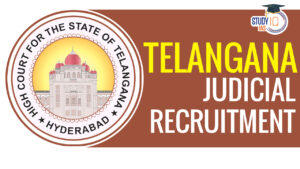Daily Current Affairs for UPSC 2023
Q) Recently seen in news, the ‘Sagar Parikrama’ initiative is best related to which one of the following?
- A surveillance exercise between Indian Coat Guard and Navy.
- Builiding port infrastructure in coastal states.
- Disseminating information of fisheries related schemes.
- Development of deep ocean mining capabilities.
Daily Current Affairs for UPSC – 18 February 2023
Explanation:
- Option (3) is correct: Sagar Parikrama is an initiative launched by the Ministry of Fisheries, Animal Husbandry and Dairying. Its main objective is to facilitate interaction with fishermen, coastal communities and stakeholders so as to disseminate information of various fisheries related schemes and programs being implemented by the Government. Demonstrating solidarity with all fisher folk, fish farmers and concerned stakeholder as a spirit of Atma Nirbhar Bharat. To promote responsible fisheries with focus on sustainable balance between the utilization of marine fisheries resources for food security of nation and livelihoods of coastal fisher communities. Protection of marine ecosystems. Sagar Parikrama program is proposed to be celebrated in all coastal states/UTs through a pre-decided sea route along coastal states and islands. It includes interaction programmes with fishermen, fisher communities and stakeholders in these locations and districts in order to know the problems of Coastal Fisher folk. Certificates will be awarded to progressive fishermen, especially coastal fishermen, fish farmers, young fishery entrepreneurs etc, under the Pradhan Mantri Matsya Sampadha scheme, Kisan Credit Card, and state schemes.
Q) With reference to Capital market in India, consider the following statements:
- The Department of Economic Affairs is responsible for formulating the policies related to the development of the securities markets in India.
- The Ministry of Finance regulates the foreign exchange markets through the Foreign Exchange Management Act of 1999.
- SEBI has the authority to regulate commodity exchanges in India under the Securities Contracts Act of 1956.
Which of the statements given above are correct?
- 1 and 2 only
- 1 and 3 only
- 2 and 3 only
- 1, 2 and 3
Explanation:
- Statement 1 is correct: Ministry of Finance regulates through the Department of Economic Affairs-Capital Markets Division. The division is responsible for formulating the policies related to the orderly growth and development of the securities markets (that is, share, debt and derivatives) as well as protecting the interest of the investors. Division administers legislations and rules made under the:
- Depositories Act, 1996,
- Securities Contracts (Regulation) Act, 1956 (SCRA)
- Securities and Exchange Board of India Act, 1992.
- Statement 2 is incorrect: Reserve Bank of India (RBI) is governed by the Reserve Bank of India Act, 1934. The RBI is responsible for implementing monetary and credit policies, issuing currency notes, being banker to the government, regulator of the banking system, manager of foreign exchange, and regulator of payment & settlement systems while continuously working towards the development of Indian financial markets. The RBI regulates financial markets and systems through different legislations. It regulates the foreign exchange markets through the Foreign Exchange Management Act, 1999.
- Statement 3 is correct: Securities Contracts (Regulation) Act, 1956 (SCRA) has empowered SEBI to recognise and regulate stock exchanges and later commodity exchanges in India. Rules and regulations made by SEBI under the SCRA relate to listing of securities like equity shares, the functioning of stock exchanges including control over their management and administration. Act also seeks to protect the interests of investors by creating an Investor Protection Fund for each stock exchange. SEBI ensures protection of investors’ interests by regulating the listing and trading of equity shares and other securities, and by registering and regulating institutions handling public funds.
Q) Consider the following statements about the ‘Pangolin’:
- These are nocturnal mammals that are endemic to Asia.
- All four species of pangolins are considered endangered by the International Union for Conservation of Nature.
- Both the Indian pangolin and the Chinese pangolin are protected under Schedule I of the Wildlife Protection Act, 1972.
Which of the statements given above are correct?
- 1 only
- 1 and 2 only
- 3 only
- 2 and 3 only
Explanation:
- Statement 1 is incorrect: Pangolin, also known as an ecosystem engineer, is confronting the perils of massive poaching and illegal trafficking in India. Pangolins are a type of mammal that belongs to the order Pholidota. They are nocturnal animals and spend much of their time in trees or burrows and are found in parts of Asia and Africa.
- Statement 2 is incorrect: They are also known as scaly anteaters because of their unique appearance, with large overlapping scales (with scales made of keratin) covering their body, which they use for protection against predators. They have long, sticky tongues, which they use to catch ants, termites, and other insects. They are also one of the most trafficked animals in the world due to the high demand for their meat and scales in traditional medicine and as luxury food items. All eight species of pangolins are considered endangered or critically endangered by the International Union for Conservation of Nature (IUCN).
- Statement 3 is correct: In India, the Indian Pangolin (Manis crassicaudata) and the Chinese Pangolin (Manis pentadactyla) are protected under Schedule I of the Wildlife Protection Act, 1972. Hunting, poaching, trading, or possession of pangolins or their parts is illegal in India under this Act. Pangolins are also listed under Appendix I of the Convention on International Trade in Endangered Species of Wild Fauna and Flora (CITES), which means that international trade in pangolins or their parts is prohibited.
Q) With reference to Crimes against Humanity (CAH), consider the following statements:
- Crimes against humanity are those that only occur during an armed conflict.
- CAH are tried by the International Criminal Court, which has the authority to order the arrest of a person who has committed such crimes.
- India has signed the Rome statute which defines various categories of the CAH.
Which of the statements given above is/are not correct?
- 1 and 2 only
- 1 and 3 only
- 2 and 3 only
- 1, 2 and 3
Explanation:
- Statement 1 is incorrect: According to the 1998 Rome Statute, which established the International Criminal Court (ICC), Crimes Against Humanity (CAH) refer to specific crimes that are “committed as part of a widespread or systematic attack directed against any civilian population, with knowledge of the attack.” These crimes include murder, torture, sexual violence, enslavement, persecution, enforced disappearance, etc. The statute further mentions that crimes against humanity do not need to be linked to an armed conflict and can also occur in peacetime, similar to the crime of genocide.
- Statement 2 is incorrect: Crimes against humanity appeared for the first time in a treaty in the 1945 Nuremberg Charter at the end of the Second World War, albeit with a different definition than today. Unlike genocide and war crimes, crimes against humanity aren’t officially codified in an international treaty but are still adjudicated in the International Criminal Court (ICC) and other global bodies. Although crimes against humanity are tried at the ICC, the court doesn’t have the power to arrest suspects. Since the 1990s, CAH have been codified in different international treaties such as:
- The Statute of the International Criminal Tribunal for the former Yugoslavia (1993),
- The Statute of the International Tribunal for Rwanda (1994), and
- The Rome Statute of the International Criminal Court (1998).
- Statement 3 is incorrect: India is not a party to the Rome Statute, which means that it is under no obligation at present to enact separate legislation dealing with CAH. Also, the Indian representatives at the International Law Commission (ILC) have shown their concerns regarding negotiations for the adoption of the separate treaty on CAH. India wanted a distinction to be made between international and internal armed conflicts. This was probably because its internal conflicts with Naxals and other non-state actors in places like Kashmir and the Northeast could fall under the scope of CAH. India is of the view that it has signed but not yet ratified the UN International Convention for the Protection of All Persons from Enforced Disappearances; therefore, it is under no obligation to criminalize it through domestic legislation.
Q) Consider the following statements about ‘REAIM 2023’:
- It brings governments and businesses together to reach consensus on basic principles for use of Artificial intelligence in armed conflict.
- India and South Korea recently inaugurated this initiative for sharing experiences and best practices among the participants.
Which of the statements given above is/are correct?
- 1 only
- 2 only
- Both 1 and 2
- Neither 1 nor 2
Explanation:
- Statement 1 is correct but statement 2 is incorrect: Recently, the world’s First International Summit on the Responsible Use of Artificial intelligence in the Military (REAIM 2023) was held in The Hague, Netherlands. The REAIM 2023 brings together governments, corporations, academia, startups, and civil societies to raise awareness, discuss issues, and possibly, agree on common principles for deploying and using AI in armed conflicts. The conference, co-hosted by South Korea, hosted 80 government delegations (including those from the US and China), and over 100s of researchers and defence contractors. India was not a participant in the summit. The objectives of REAIM 2023 were:
- Putting the topic of ‘responsible AI in the military domain’ higher on the political agenda;
- Mobilising and activating a wide group of stakeholders to contribute to concrete next steps;
- Fostering and increasing knowledge by sharing experiences, best practices and solutions.


 Current Affairs 25th April 2024 for UPSC...
Current Affairs 25th April 2024 for UPSC...
 Editorial of the day (25th Apr): UK's Rw...
Editorial of the day (25th Apr): UK's Rw...
 Telangana Judicial Recruitment Notificat...
Telangana Judicial Recruitment Notificat...

















